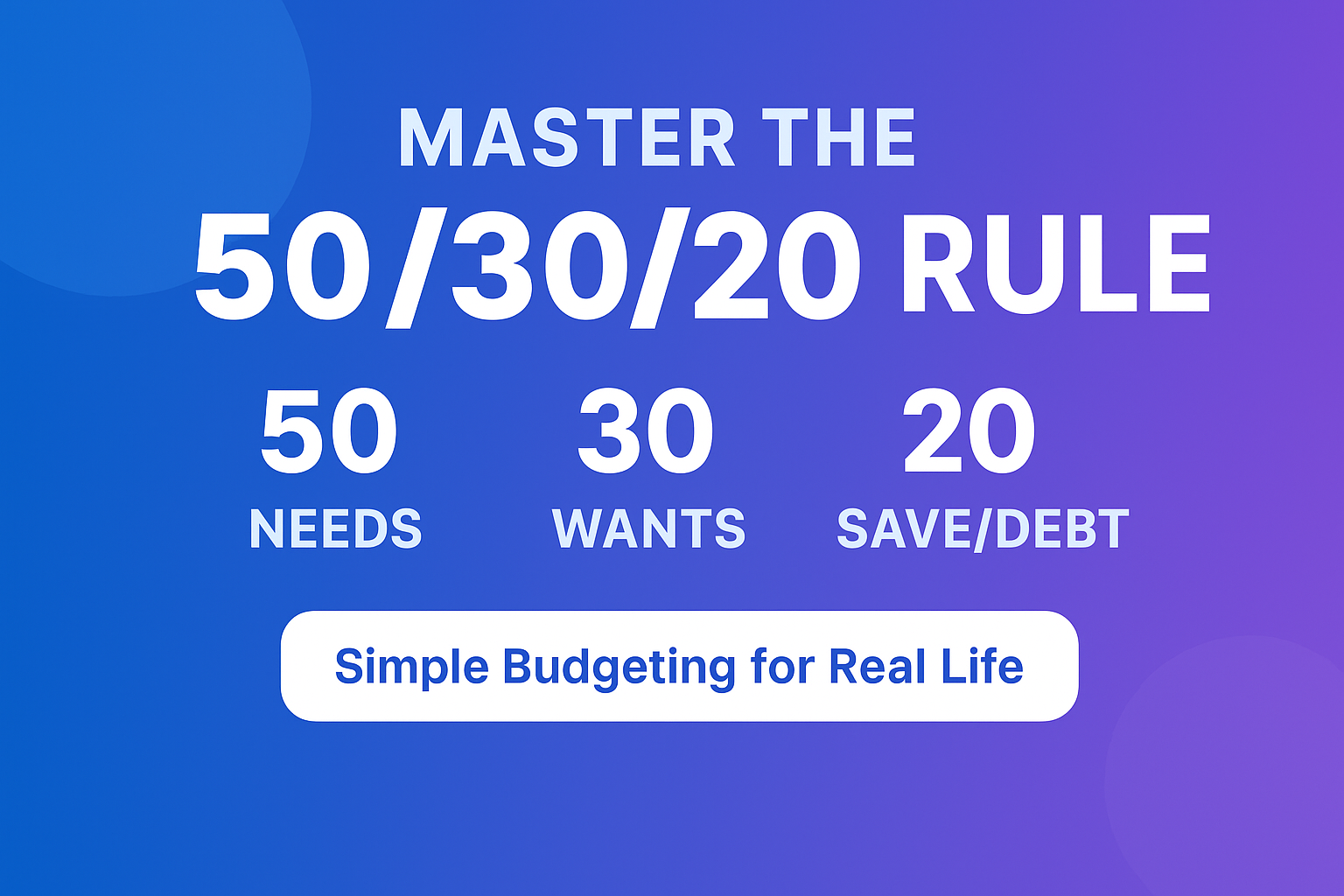Introduction
Managing money can feel overwhelming, but it doesn’t have to be complicated. One of the easiest and most effective ways to take control of your finances is through the 50/30/20 rule. This simple budgeting method has helped millions of people create financial balance, save for the future, and enjoy life without guilt.
In this article, we’ll break down exactly what the 50/30/20 rule is, how you can apply it to your own budget, and why it works so well.
What is the 50/30/20 Rule?
The 50/30/20 rule is a straightforward budgeting method that divides your after-tax income into three categories:
- 50% Needs: Essential expenses like rent, groceries, utilities, transport, and insurance.
- 30% Wants: Lifestyle choices such as dining out, entertainment, shopping, or hobbies.
- 20% Savings & Debt Repayment: Emergency fund, retirement savings, investments, or paying off loans.
By following this formula, you ensure your money is balanced between living comfortably today and preparing for tomorrow.
Real-Life Example
Imagine you earn R20,000 per month (after tax). Here’s how the 50/30/20 rule would split your budget:
- Needs (50%) → R10,000 for rent, groceries, transport, etc.
- Wants (30%) → R6,000 for dining out, Netflix, fashion, gadgets, etc.
- Savings & Debt (20%) → R4,000 into savings, investments, or paying off credit card debt.
This makes budgeting simple and stress-free, while still leaving room for enjoyment.
Why the 50/30/20 Rule Works
✅ Easy to follow – No complicated spreadsheets required.
✅ Balanced lifestyle – You don’t have to give up fun to save.
✅ Future-focused – Ensures you build savings while covering today’s needs.
✅ Adaptable – Works for students, professionals, and even freelancers.
Tips to Make the 50/30/20 Rule Work for You
- Track your spending – Use apps like Mint, YNAB, or even Excel to monitor expenses.
- Automate savings – Set up automatic transfers to a savings or investment account.
- Adjust percentages if needed – In high-cost areas, your needs may take 60% instead of 50%. Just make sure you still prioritize saving something.
- Review monthly – Revisit your budget every month to stay on track.
Final Thoughts
The 50/30/20 rule is more than just numbers—it’s a financial mindset shift. By organizing your money with this formula, you’ll gain peace of mind, reduce financial stress, and move closer to financial freedom.
Remember: budgeting doesn’t mean restricting yourself; it means giving your money a purpose.
If you’re ready to take charge of your finances, start applying the 50/30/20 rule today—your future self will thank you.



